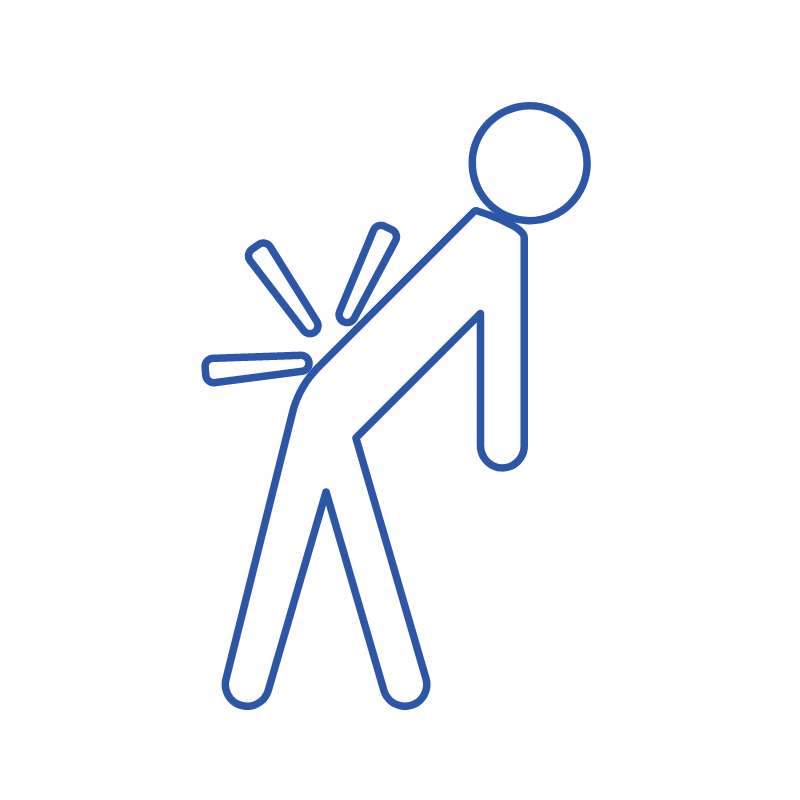Lumbar Stenosis is a condition where the space within your spine narrows, which can put pressure on the spinal cord.
Lumbar Stenosis Treatment
What is Lumbar Stenosis?
Lumbar Stenosis is where the space within the spinal canal is reduced in your lower back. The reduced space can irritate or compress the spinal cord or exiting nerves. Symptoms can vary from none at all to pins and needles, numbness, pain or weakness in the lower limb. The area affected depends on the level the stenosis in your back.
What are the causes?
Some people are born with narrow spinal canals, while for others something needs to happen to narrow the space. Other causes may be:
- Over Growth of Bone – Wear and tear can put pressure on the vertebrae causing them to grow more bone and sometimes forming spurs, also known as osteophtyes. These osteophytes can develop in the spinal canal reducing the space.
- Herniated Disc – As we age, the soft tissue between the vertebrae dry out. They in turn can crack causing the soft inner material to escape (herniate) and press on the spinal cord.
- Thickened Ligaments – The tough cords that help hold the bones of your spine together can become stiff and thickened over time. These thickened ligaments can bulge into the spinal canal.
- Tumours – Abnormal growths can form inside the spinal canal. These are uncommon and are detected via MRI or CT Scans.
- Spinal Injuries – Trauma or car accidents can cause fractures, dislocations or swelling of the spine, which may lead to pressure on the spinal cord.
What are the symptoms?
The following symptoms can happen in one or both legs:
- Low back pain
- Sudden pain – shooting, severe, burning and/or aching
- Tingling (similar to pins and needles sensations)
- Numbness (complete or just a decreased sensation)
- Muscle/limb weakness
- Muscle spasm, tightness or cramping
- Loss of or abnormal reflexes
- Inability to stand up straight or maintain balance
- In severe cases, bowel or bladder dysfunction (urinary urgency and incontinence)
Treatment for Spinal Stenosis
It is common for people with Lumbar Stenosis to reduce exercise to help with pain, however this is counter productive as you also lose strength and increase pain in the long run. Physiotherapy is an effective way to reduce pain and improve mobility with lumbar stenosis. Timely diagnosis and treatment can be vital to improve your long term out look on life.
At Vitalis Physiotherapy, treatment is aimed at stabilising the spinal column and using exercise to unload the spine. This is done through:
- Soft tissue mobilisations (massage)
- Joint mobilisation
- Heat therapy
- Taping
- A tailored home exercise program
- Graded Exposure to load program
Anti-inflammatory and/or analgesic medication, rest and heat packs may help some of the symptoms.
Rarely, untreated severe spinal stenosis may progress and cause permanent:
- Numbness
- Weakness
- Balance problems
- Incontinence
- Paralysis
How to book an appointment?
If you think that you may be suffering from lumbar stenosis, or you’re looking for a ‘physiotherapist near me’, our physios at Vitalis Physiotherapy can assess and diagnose the condition. They may also refer you to get scans in some severe cases to better understand your needs. They will then tailor your treatment plan to aid in your pain relief and recovery.
All you need to do is just give us a call on 0410 559 856 and request an initial appointment. Please let our friendly reception staff know the background and severity of your condition.
You can visit our FAQs for more information about appointments at Vitalis Physiotherapy.
Need Help?
Are you suffering from painful lumbar stenosis? Contact Vitalis Physiotherapy now to book in your treatment.
Call our friendly team on 0410 559 856. We’d love to help.








